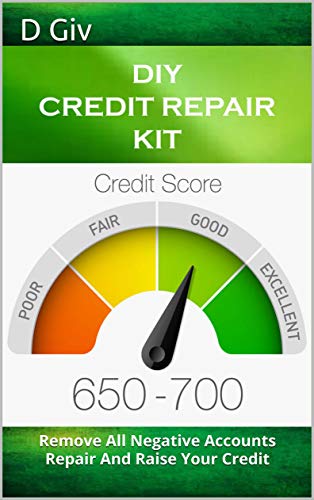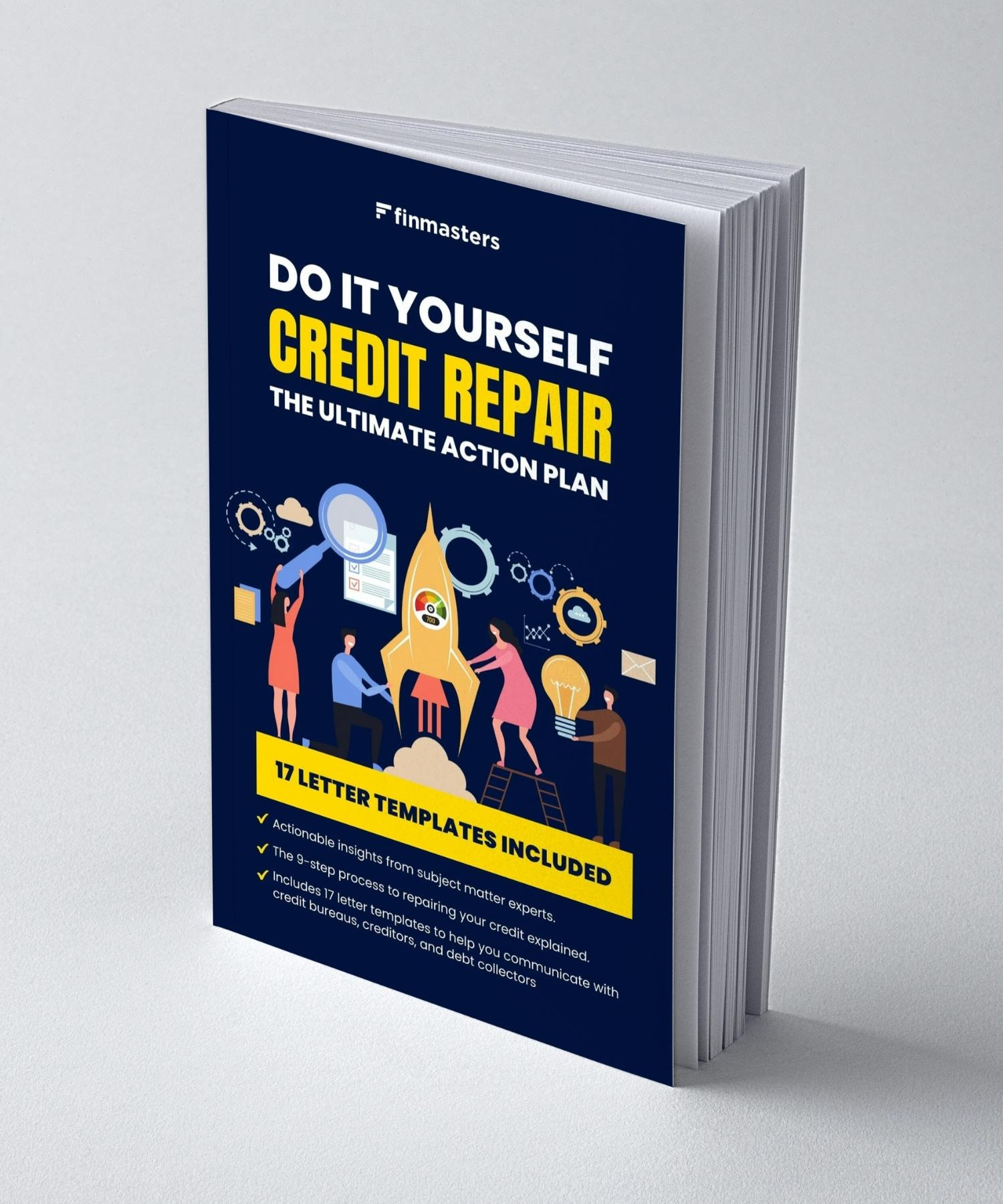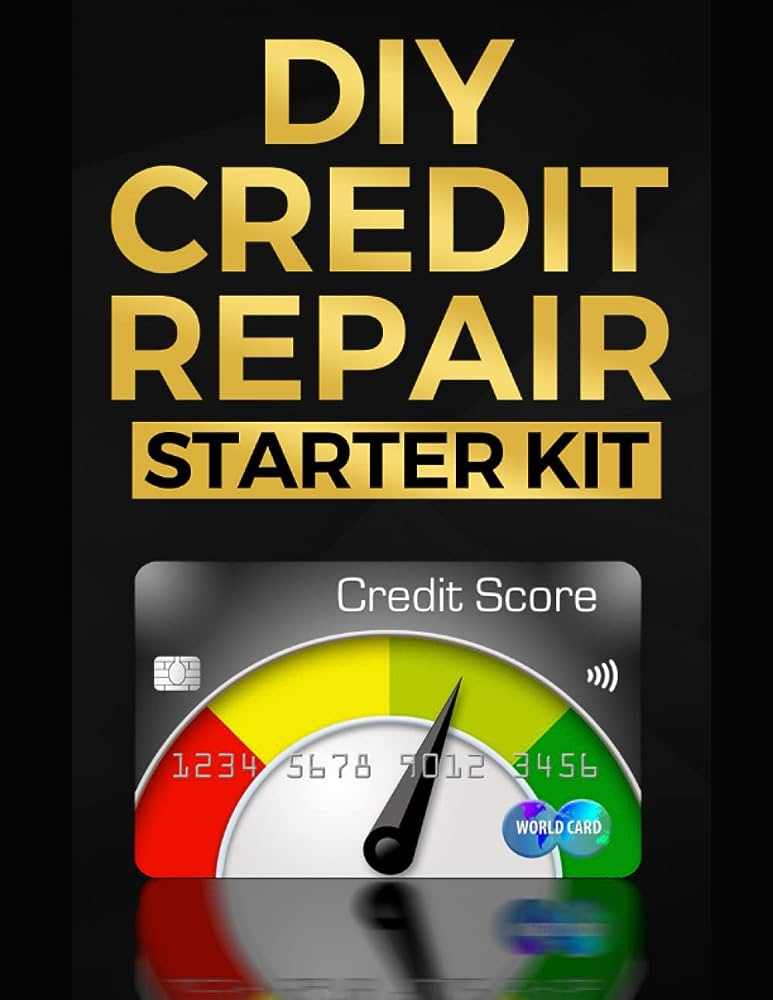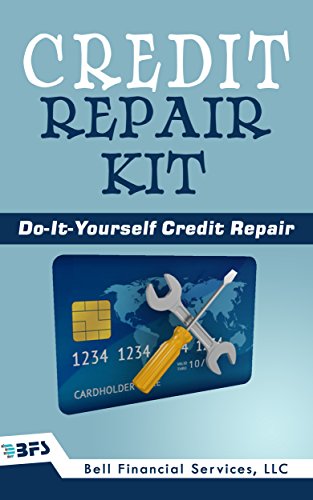If you’re tired of dealing with a less-than-stellar credit score and want to take matters into your own hands, look no further than the DIY Credit Repair Kit. This comprehensive kit provides you with all the tools and resources you need to repair your credit and improve your financial standing. With step-by-step instructions and helpful tips, this kit empowers you to fix errors on your credit report, negotiate with creditors, and establish healthy credit habits. Say goodbye to frustration and hello to a brighter financial future with the DIY Credit Repair Kit.
1. Understanding Your Credit Score
1.1 What is a Credit Score?
Your credit score is a three-digit number that represents your creditworthiness. It is a numerical assessment of your financial history, specifically your ability to repay debts and manage your credit responsibly. Lenders use your credit score to determine whether you are a reliable borrower and to assess the risk of lending you money.
1.2 Importance of Knowing Your Credit Score
Knowing your credit score is crucial because it affects many aspects of your financial life. A good credit score can make it easier for you to secure loans, obtain favorable interest rates on credit cards, and even rent an apartment. On the other hand, a poor credit score can lead to higher interest rates, difficulty in obtaining loans, and limited access to credit options.
By understanding your credit score, you can take proactive steps to improve it and maintain good financial health. It allows you to have a clear picture of your creditworthiness and make informed decisions when it comes to borrowing money or managing your finances.
1.3 How is a Credit Score Calculated?
Credit scores are calculated based on various factors and algorithms used by credit reporting agencies. While the exact formulas may vary slightly between agencies, the most commonly used credit scoring model is the FICO score. The FICO score ranges from 300 to 850, with higher scores indicating better creditworthiness.
The calculation of your credit score takes into account several factors, including your payment history, the amount of debt you owe, the length of your credit history, types of credit you have, and any recent credit inquiries. Each factor carries a different weight in the calculation, and understanding how these factors impact your score can give you insights into how to improve it.
2. Assessing Your Credit Report
2.1 Requesting Your Credit Reports
To assess your credit report, you first need to request a copy from each of the major credit reporting agencies – Equifax, Experian, and TransUnion. Under the Fair Credit Reporting Act (FCRA), you are entitled to a free copy of your credit report from each agency once a year. You can either request them online, by mail, or by phone.
2.2 Reviewing Your Credit Reports
Once you have received your credit reports, it is important to meticulously review them for accuracy and completeness. Check for any errors, inaccuracies, or inconsistencies that could be negatively impacting your credit score or indicating potential identity theft. Look for incorrect personal information, incorrect account information, or any signs of fraudulent activity.
2.3 Identifying Errors or Discrepancies
If you identify any errors or discrepancies on your credit reports, it is important to take immediate action to rectify them. Contact the credit reporting agency in writing and provide any supporting documentation to prove the inaccuracies. The agency is legally obligated to investigate and correct any errors within a reasonable timeframe.

3. Disputing Inaccuracies on Your Credit Report
3.1 Understanding Your Rights under the Fair Credit Reporting Act (FCRA)
The FCRA grants you certain rights when it comes to disputing inaccuracies on your credit report. It ensures that credit reporting agencies, lenders, and creditors are held accountable for the accuracy and completeness of the information they report.
Under the FCRA, you have the right to dispute any information on your credit report that you believe to be inaccurate, incomplete, or misleading. The credit reporting agency must conduct a reasonable investigation into your dispute and make any necessary corrections. You also have the right to add a statement of dispute to your credit report to provide your side of the story.
3.2 Gathering Evidence and Documenting the Errors
When disputing inaccuracies on your credit report, it is essential to gather as much evidence as possible to support your case. This may include copies of payment receipts, bank statements, or correspondence with lenders or creditors. Clearly document each error that you wish to dispute and keep a record of all your communication with the credit reporting agency and the parties involved.
3.3 Writing a Dispute Letter to the Credit Reporting Agency
To initiate the dispute process, you should write a formal dispute letter to the credit reporting agency responsible for the inaccurate information. Clearly outline the errors you have identified and provide supporting evidence. Be concise, polite, and firm in your letter, and make sure to send it via certified mail with a return receipt requested to have a record of delivery.
4. Dealing with Negative Items on Your Credit Report
4.1 Understanding Different Types of Negative Items
Negative items on your credit report can significantly impact your credit score and your ability to obtain credit. These can include late payments, collections, charge-offs, bankruptcies, foreclosures, and tax liens. Each negative item has different consequences and may stay on your credit report for varying lengths of time.
4.2 Paying Off or Settling Outstanding Debts
One of the most effective ways to improve your credit score is to address any outstanding debts. Start by paying off or settling any delinquent accounts. Contact your creditors to negotiate payment arrangements or settlements, especially if you are struggling financially. Paying off these debts can show lenders that you are making an effort to rectify past financial mistakes.
4.3 Negotiating with Creditors and Collection Agencies
If you are unable to pay off your debts in full, it may be possible to negotiate with your creditors or collection agencies for a reduced settlement amount or a payment plan. Be proactive in contacting them to discuss your options and explain your financial situation. It is often in their best interest to work with you to recover some payment rather than receiving nothing at all.

5. Establishing and Building Credit
5.1 Opening a Secured Credit Card
If you have no credit history or poor credit, opening a secured credit card can be a valuable tool in building or rebuilding your credit. With a secured credit card, you provide a deposit as collateral, which becomes your credit limit. Regularly using the card and making timely payments can demonstrate responsible credit usage and establish a positive credit history.
5.2 Becoming an Authorized User on Someone Else’s Credit Card
Another way to build credit is by becoming an authorized user on someone else’s credit card. This allows their credit history to be reflected on your credit report. It is important to choose a person who has good credit habits and pays their bills on time. Be sure to establish clear expectations and an agreement with the cardholder to avoid any potential issues.
5.3 Applying for a Credit Builder Loan
A credit builder loan is specifically designed to help individuals establish or improve their credit scores. With this type of loan, the funds are typically held in an account, and you make regular payments over a set period. At the end of the loan term, the funds are released to you, and your timely payments are reported to the credit reporting agencies. This can help demonstrate your creditworthiness and improve your credit score.
6. Managing Your Credit Utilization
6.1 Understanding Credit Utilization Ratio
Credit utilization ratio refers to the percentage of your available credit that you are currently using. It is an important factor in calculating your credit score and can impact your creditworthiness. To calculate your credit utilization ratio, divide your total credit card balances by your total credit limits and multiply by 100.
6.2 Tips for Reducing Credit Utilization
To improve your credit score, it is advisable to keep your credit utilization ratio below 30%. Consider paying down your credit card balances to decrease your overall credit utilization. Additionally, you can request a credit limit increase on your existing credit cards, but be cautious not to misuse the additional credit.
6.3 Monitoring and Adjusting Credit Card Balances
Regularly monitoring your credit card balances is essential to ensure that your credit utilization stays within an optimal range. Set reminders to check your balances frequently and make necessary adjustments to avoid excessive credit utilization. Responsible management of your credit card balances can positively impact your credit score and overall financial health.

7. Creating a Repayment Plan
7.1 Assessing Your Current Financial Situation
To create a repayment plan, you must first assess your current financial situation. Calculate your total monthly income and expenses to determine how much you can afford to allocate towards debt repayment. Consider prioritizing high-interest debts or those with potential legal consequences to avoid further financial strain.
7.2 Prioritizing and Organizing Your Debts
Once you have assessed your financial situation, prioritize and organize your debts. Create a list of all your debts, including the amounts owed, interest rates, and minimum monthly payments. Determine which debts to tackle first based on factors such as interest rates, balances, and potential consequences of non-payment.
7.3 Implementing Strategies for Debt Repayment
After prioritizing your debts, implement strategies for debt repayment. Consider utilizing the debt snowball or debt avalanche method to accelerate your progress. With the debt snowball method, you start by paying off the smallest debt first, while with the debt avalanche method, you focus on paying off the debt with the highest interest rate. Whichever method you choose, stick to your repayment plan and make consistent payments to reduce your debts.
8. Developing Healthy Credit Habits
8.1 Paying Your Bills on Time
One of the most crucial habits for maintaining a good credit score is paying your bills on time. Late payments can have a significant negative impact on your credit score and stay on your credit report for up to seven years. Set up automatic payments, create reminders, or use budgeting apps to ensure that all your bills are paid promptly.
8.2 Avoiding Unnecessary Credit Inquiries
Every time you apply for credit, a hard inquiry is recorded on your credit report, which can temporarily lower your credit score. Avoid unnecessary credit inquiries by carefully considering whether you truly need new credit before applying. Limiting credit inquiries can help maintain a stable credit score and reduce the risk of potential rejections.
8.3 Regularly Monitoring Your Credit
Regularly monitoring your credit is essential for identifying potential issues, such as inaccuracies, fraudulent activity, or signs of identity theft. Check your credit reports from each agency at least once a year and consider signing up for credit monitoring services that provide real-time alerts for significant changes in your credit report. Being proactive in monitoring your credit can help you take prompt action to resolve any issues that may arise.

9. Utilizing Credit Repair Companies
9.1 Pros and Cons of Using Credit Repair Companies
Credit repair companies claim to help individuals improve their credit scores by disputing negative items on their behalf. While these companies can be helpful for individuals who lack the time or knowledge to navigate the credit repair process, there are pros and cons to consider. On the positive side, credit repair companies have expertise in dealing with credit bureaus and can save you time and effort. However, there is no guarantee that they will be successful in removing negative items, and some companies may charge high fees or engage in unethical practices.
9.2 How to Choose a Reputable Credit Repair Company
If you decide to use a credit repair company, it is crucial to choose a reputable one. Look for companies that are transparent about their services, fees, and success rates. Research customer reviews and check for any complaints filed with the Consumer Financial Protection Bureau. Avoid companies that make unrealistic promises or engage in unethical practices, such as guaranteeing specific results or requesting payment upfront.
9.3 Understanding the Costs and Expectations
Credit repair companies typically charge monthly fees for their services, ranging from $50 to $150 or more. Understand the costs associated with the services and ensure that you have a clear understanding of what to expect. Remember that credit repair is not an overnight process and that the ultimate goal is to improve your credit by following sound financial habits and taking necessary steps on your own.
10. Long-Term Credit Maintenance
10.1 Sustaining Good Credit Habits
Maintaining good credit requires ongoing commitment and discipline. Continue practicing healthy credit habits such as paying bills on time, minimizing credit utilization, and regularly reviewing your credit reports for accuracy. Stay proactive in managing your finances and avoid falling into the same pitfalls that may have caused credit issues in the past.
10.2 Periodically Reviewing Your Credit Reports
Periodically reviewing your credit reports is essential to ensure accuracy and identify any potential issues early on. Continue to request your free annual credit reports from each agency and review them for any changes or discrepancies. This allows you to address problems promptly and maintain a clear understanding of your creditworthiness.
10.3 Taking Advantage of Available Resources
There are numerous resources available to help you maintain good credit, including financial education programs, credit counseling services, and online tools for monitoring and managing your credit. Take advantage of these resources to educate yourself, improve your financial knowledge, and stay on top of your credit health. By staying informed and proactive, you can ensure long-term credit maintenance and continue on the path to financial success.

